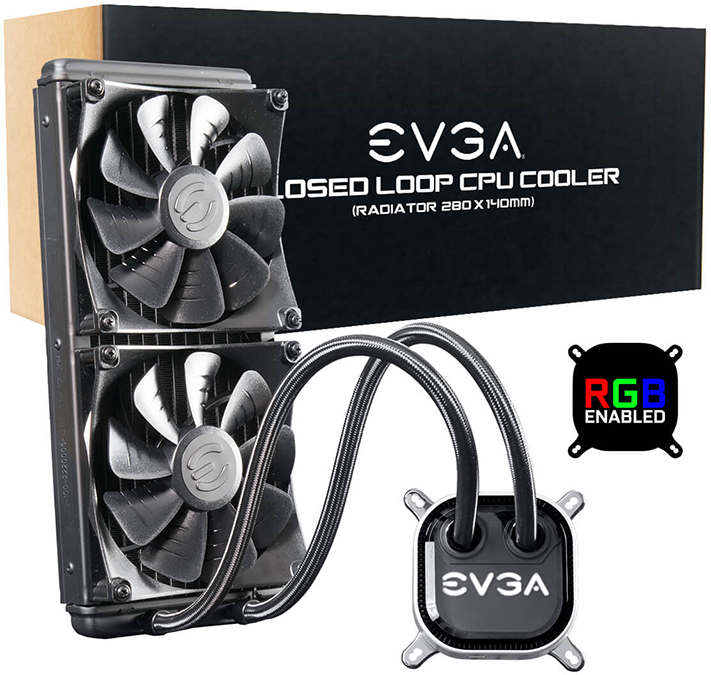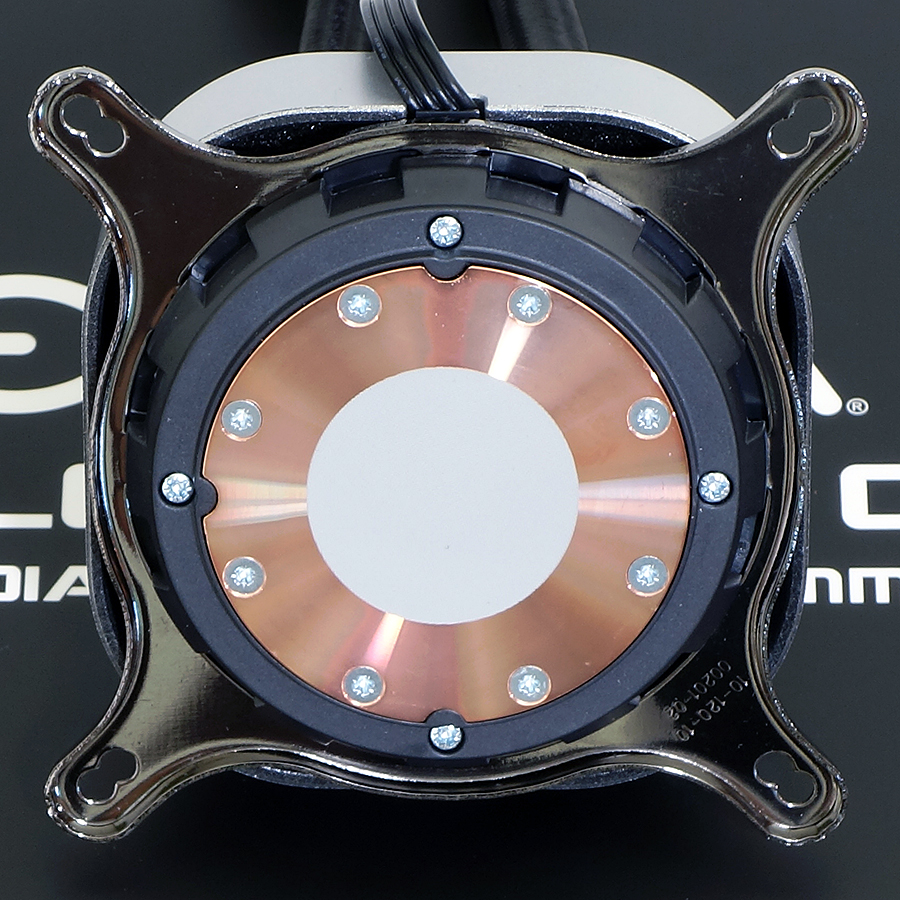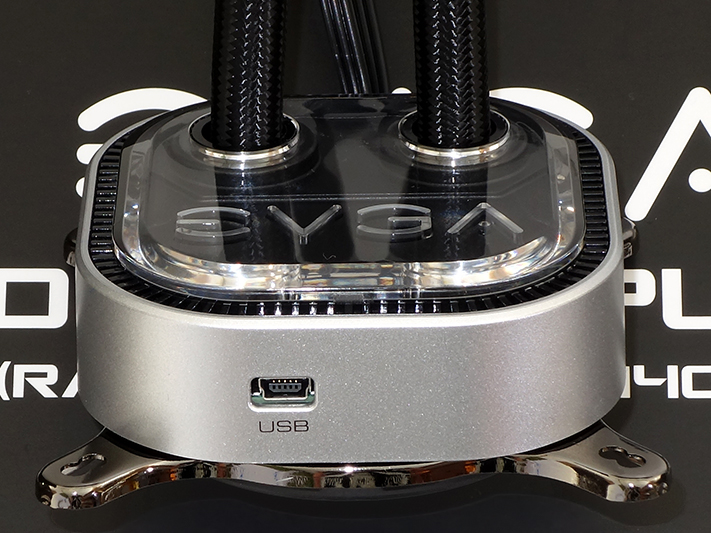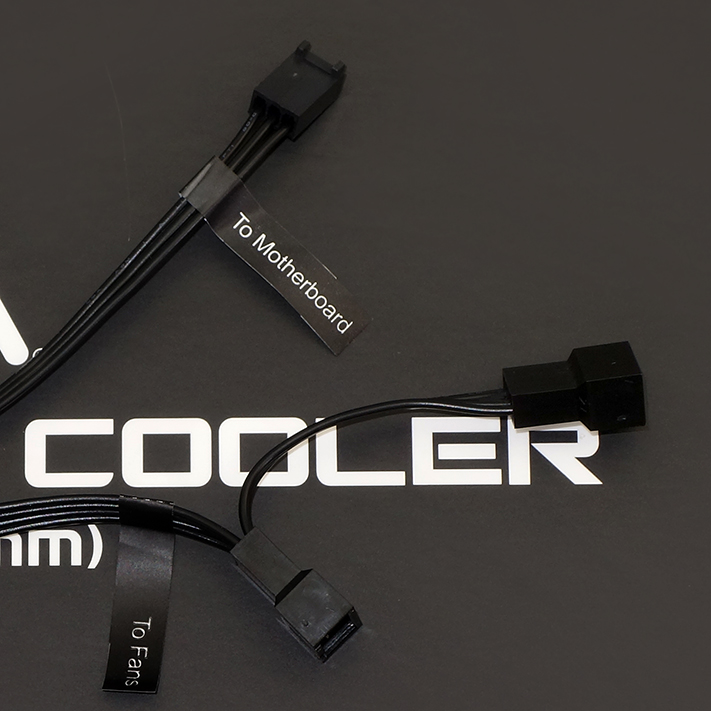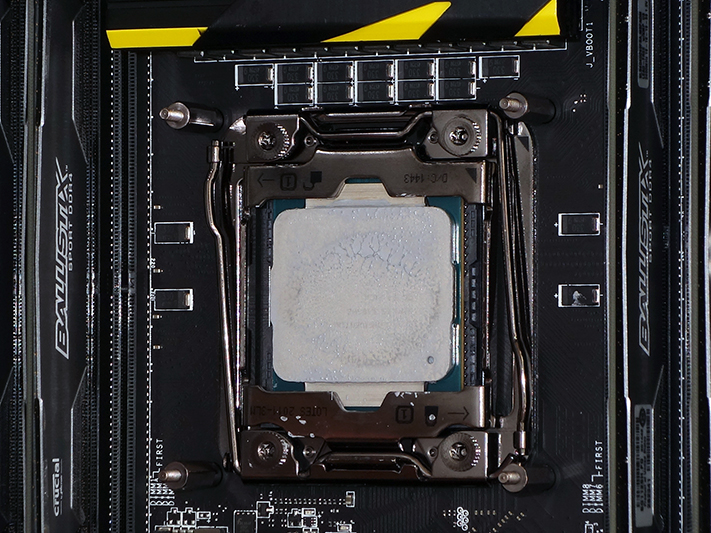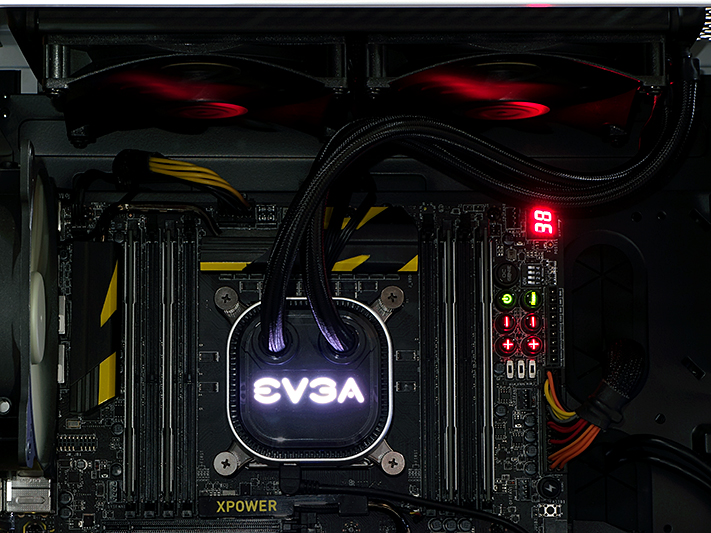Early Verdict
EVGA’s CLC 280 combines tried-and-true cooler technology with high-speed fans to produce the ultimate-cooling 2x 140mm system.
Pros
- +
Excellent CPU cooling performance
- +
Exceptional voltage-regulator cooling performance (when top-mounted)
- +
PWM fans can be controlled by motherboard or onboard controller
Cons
- -
Somewhat noisy
- -
Onboard controller adds to price
Why you can trust Tom's Hardware
Features & Specifications
EVGA has been in the cooling business a while, but it’s been years since we’ve tested any of those products. Perhaps that’s because it took them until earlier this year to finally introduce a CLC. Welcome the CLC 280.
Indents at the center of fan frames stand out from other Asetek-manufactured cooling systems, and should help to reduce noise. We’re also hoping that any pressure that bleeds off there will assist motherboard voltage regulator cooling, since its heat sink is next to these fans. Here’s a short list of measured specifications:
Specifications
A factory-filled aluminum radiator with mounted fans is factory sealed to the RGB pump/water block unit via 14.5” nylon-sleeved rubber tubing. Mounting hardware includes a factory-installed LGA115x/20xx (2011 through 2066) bracket, a legacy AMD rectangular-pattern bracket, a USB controller cable, screws and washers for radiator installation, AMD standoffs for use with the factory support plate of most legacy AMD motherboards, a set of standoffs for Intel’s LGA 2011/2011-v3/2066, another set of standoffs to match the included LGA 115x/1366 support plate, and a set of thumb nuts to secure the head unit to the standoffs.
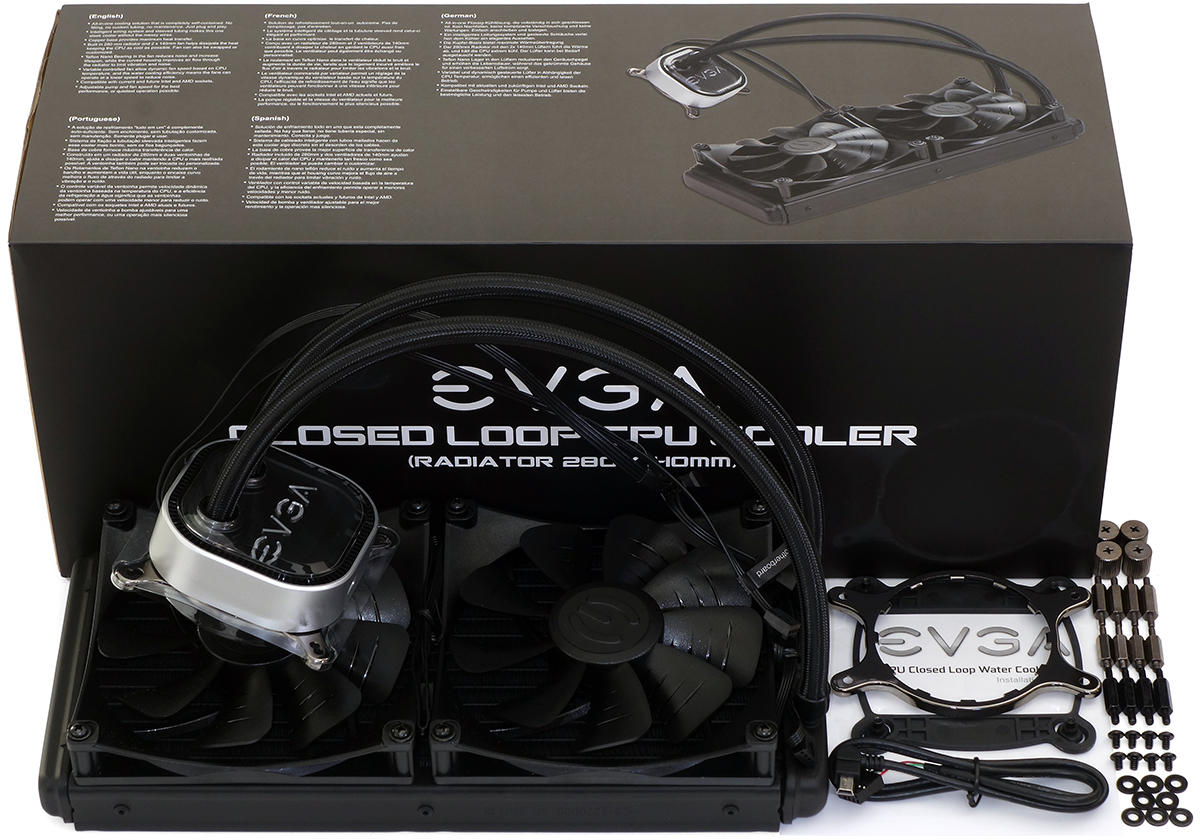
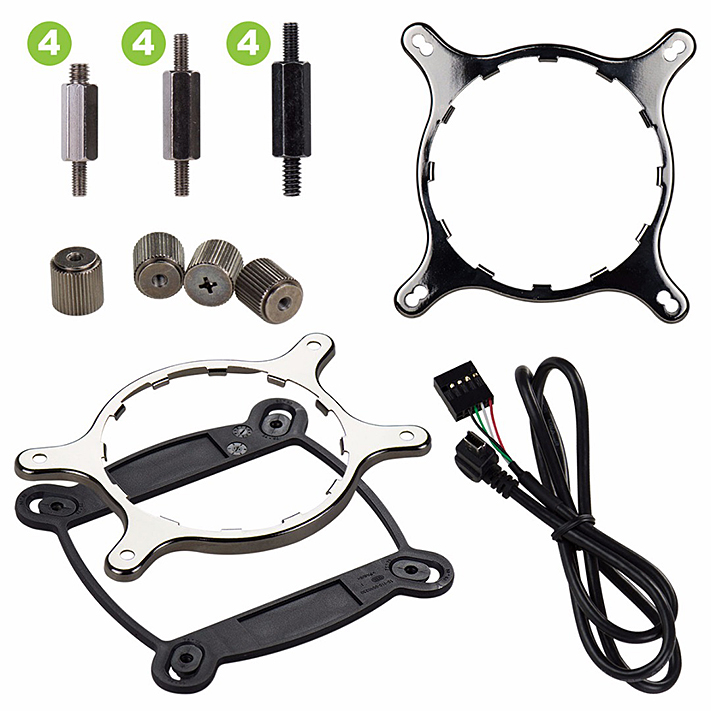
Recent samples have arrived with a dual-pattern AMD (AM4 and legacy) bracket plus yet another set of standoffs for AM4 boards that have the protruding threads on the factory support plate. EVGA has also updated its installation kit image to show a clip-type cooler for AMD motherboards that don’t have threaded support plates beneath the clip brackets.
The CPU mating surface has the familiar, smoothly-latched finish and factory-applied thermal paste of EVGA’s ODM. It’s held tight to the CPU using a standardized bracket that can be removed by twisting counter-clockwise, and replaced with an alternative part (such as the legacy AMD bracket shown previously).
Rather than rely on motherboard firmware to set fan speed via PWM, the CLC 280 connects to the motherboard via a classic Mini USB to 9-pin USB 2.0 header cable. Only four of those pins are connected, so those oddball single-port half-headers found on some motherboards may finally have a purpose.
Fortunately, the USB interface breaks out of the head unit to two standard PWM fan headers. A third (3-pin) connector sends the pump tachometer signal to the motherboard’s CPU fan header.
Get Tom's Hardware's best news and in-depth reviews, straight to your inbox.
Special standoffs fit the integrated support plate of LGA 2011 through 2066 interfaces, and a different set of standoffs replace the clip bracket of legacy AMD boards, if the support plate behind the board has the standard threads or nuts. LGA 115x users get the luxury of attaching the EVGA-supplied support bracket to the back of their boards, using yet another set of standoffs at the front of the board.
Lighting behind the nameplate is the major RGB feature of EVGA’s CLC 280.
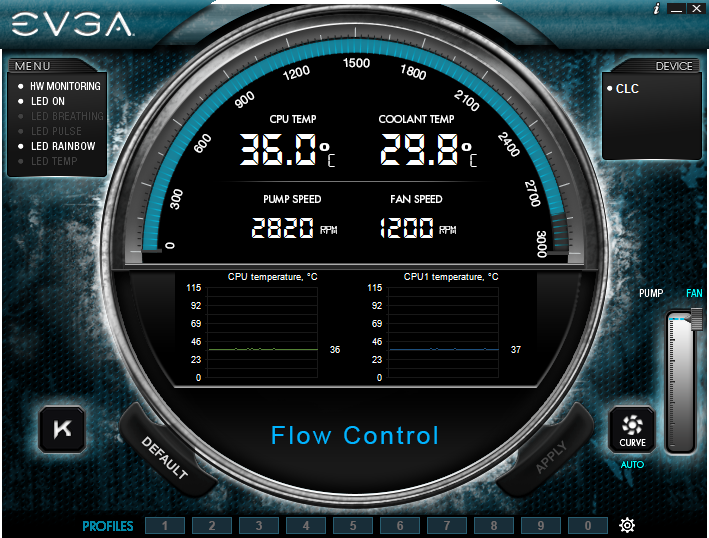
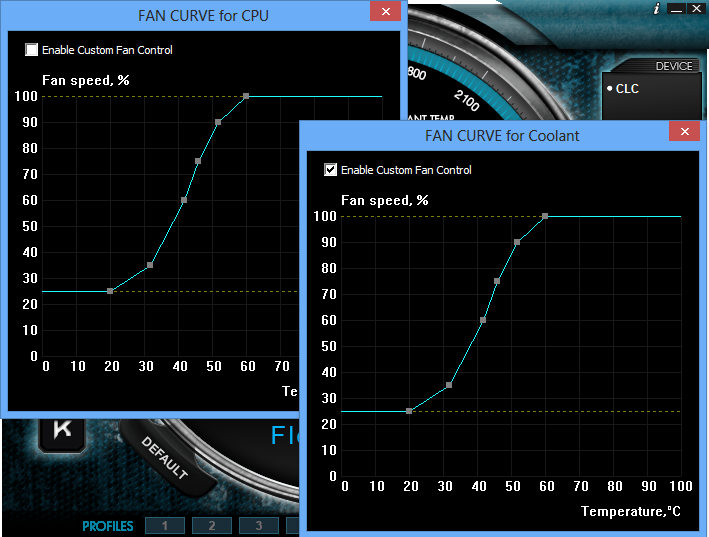
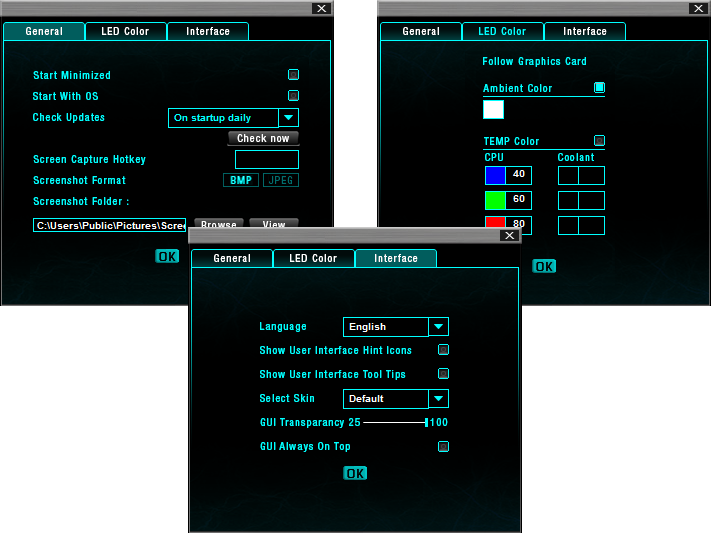
EVGA flow control software monitors temperatures and adjust fans accordingly. Users are welcome to set their own fan slopes, yet the biggest advantage over motherboard-based fan control might be that the software also allows users to change the color of the EVGA logo. The “K” icon forces full-speed operation.
MORE: Best CPU Cooling
MORE: How To Choose A CPU Cooler
MORE: All Cooling Content
-
AnimeMania General Closed Looped Cooler questions:Reply
1) Why are the cooling plates round when CPUs are square?
2) Do the cooling plates cover the entire entire CPU, even the larger ones like Threadripper and X299 CPUs? -
loki1944 Most certainly will be looking at this CLC for my next build; nothing comes close to that cooling performance AIO wise.Reply -
aidank Looks like the EVGA's results at 50 % fans are about the same as the other coolers at 100 % fans (in a cooling sense) but with greatly reduced noise.Reply -
Crashman Reply
1.) I believe the one you're looking at is machined from roundstock using a lathe20542953 said:General Closed Looped Cooler questions:
1) Why are the cooling plates round when CPUs are square?
2) Do the cooling plates cover the entire entire CPU, even the larger ones like Threadripper and X299 CPUs?
2.) It completely covers Intel's desktop CPUs (even LGA 2066), but does not completely cover Threadripper CPUs. -
Zaporro It seems EVGA wins over cooler like NZXT Kraken just because its fans allow for higher RPM which happens at cost of noise, which is nothing special, everyone can just ramp up RPM's.Reply
Here is much more detailed and in depth comparision https://www.gamersnexus.net/hwreviews/2788-evga-clc-280-review-vs-nzxt-x62-corsair-h115i/page-3 -
Lutfij The stuff coming out of Asetek is getting slimmer by the bucket loads. It's good to see that there are more offerings by other company's though if you follow through the way case manufacturing(in one common factory) has risen and a number of them have the same internal design+structure, then air cooling is a better route to go when aesthetics is brushed aside.Reply -
steve42lawson I've had bad luck with EVGA Video Cards (had several die after a few months of standard use -- my NVIDIA GeForce replacement has been working fine for over 2 years, now), so I'm dubious as to the quality of anything coming out of EVGA!Reply -
loki1944 Reply20553915 said:I've had bad luck with EVGA Video Cards (had several die after a few months of standard use -- my NVIDIA GeForce replacement has been working fine for over 2 years, now), so I'm dubious as to the quality of anything coming out of EVGA!
Have had an EVGA GTX 660 3GB running fine for almost 5 years now, EVGA GTX 1060 3GB for over a year, EVGA 1300W PSU for 3 years, EVGA 1000W PSU for 2 years, EVGA 750W PSU for 18 months.
